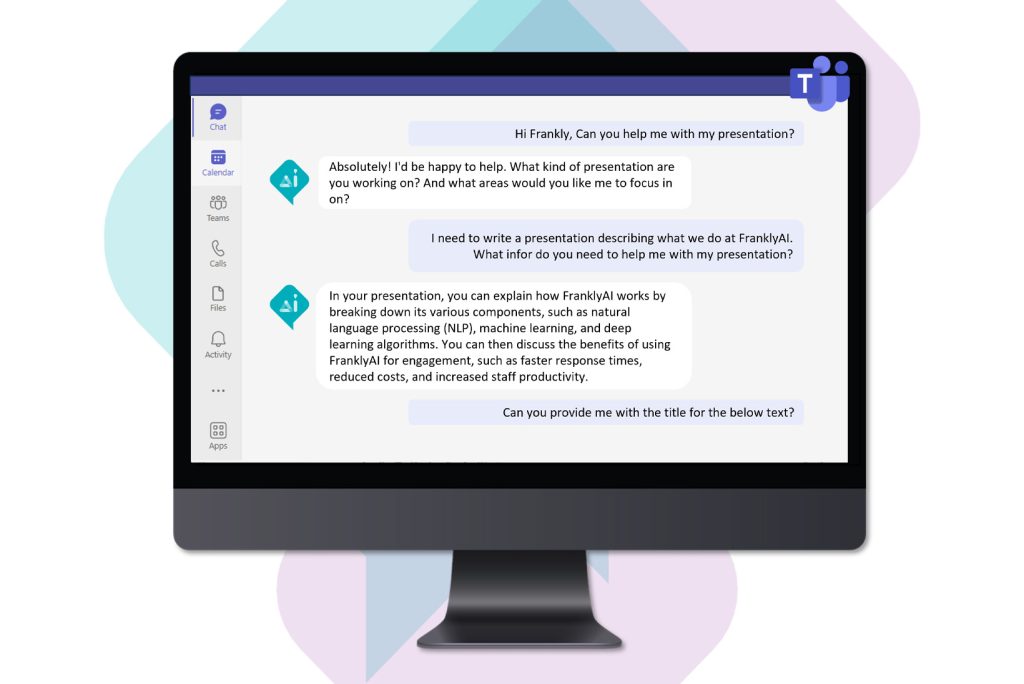August 23, 2023
As an economic storm swirls overhead – ruthlessly ripping through industries and tearing corporate strategies to shreds – the traditional approach of business is to bunker down and hold the line.
In technology, that translates into delaying decisions, resetting priorities and pausing projects. Seldom does that mean embracing new technologies and following the latest “hot trend” with organisations preferring to favour caution over creativity.
IT spending is usually capable of remaining recession-proof however, and projected single-digit investment growth in 2023 – 5.5% in New Zealand and 4.3% globally – supports that long-held theory.
But on the topic of artificial intelligence (AI), a different approach is emerging within the enterprise.
Side-stepping the ChatGPT hype, AI is now being utilised to address budgetary concerns through enhanced efficiency and optimisation while simultaneously accelerating customer experience through improved service and insights.
“Economic challenges are producing an increased appetite for AI innovation,” observed Matt Ensor, Founder and CEO of FranklyAI.

Developed in-house by Beca, FranklyAI aims to change the way in which generative AI is utilised in enterprise and educational institutions, delivered via a software-as-a-service (SaaS) product.
The Auckland-based start-up specialises in conversational AI and is integrated within Microsoft Teams, motivated by a desire to strengthen company connections with staff, stakeholders and indigenous communities.
“CEOs know they need generative AI in their organisations but many are scared to take the next step and are unsure of the return on investment [ROI],” Ensor acknowledged.
Such strong focus on ROI is playing to the strengths of AI however, as organisations search for solutions capable of automating processes, improving customer experiences and optimising operations.
Enhancing efficiency, improving insights
The founding mission of FranklyAI was to maximise the power of AI to help improve performance and inclusion levels within Beca, a century-old consultancy rooted in the traditions of engineering.
In essence, that original goal in 2018 – some five years before generative AI hit the headlines – has not changed, to help “tackle the things that people would love not to do”.
This focus is centred on ensuring AI is as relevant to teams as possible, particularly through the lens of saving time and cost.
“Organisations are recognising that AI technologies offer a way to enhance efficiency, cut costs and remain competitive in this rapidly evolving landscape,” Ensor advised.
While “impossible” to predict the next 6-12 months of developments from a generative AI perspective, Ensor said FranklyAI is working closely with customers and industries to evaluate where best to invest development resources.
“Automation of complex tasks is where the best ROI appears to be so we expect to keep building on FranklyAI’s existing capability in that area,” he said.
According to Microsoft findings – published in the 2023 New Zealand Work Trend Index – Kiwi businesses are turning to AI to reduce digital debt as the intensity of work continues to increase at an unrelenting pace.
Notably, more than half of New Zealanders (58%) have struggled with finding the time and energy to complete work tasks with those employers 2.6x more likely to struggle with contributing to innovation efforts as a result. Business leaders (68%) are concerned and in response, are turning to AI to boost productivity gains and make efficiency inroads.
“Businesses are also keen to address challenges related to customer engagement and operational efficiency which means they’re definitely looking to AI to streamline their workflows,” Ensor added.
When first building FranklyAI in 2018, Ensor and the team assessed the technologies capable of changing how organisations work, identifying natural language processing AI as one of the most “significant”.
“In those days, AI was largely limited to not very impressive chatbots, but we saw it was going to become one of the most powerful technologies in the world,” he recalled.
According to Gartner, only 8% of customers used a chatbot during their most recent customer service experience with just 25% prepared to use one again in the future.
Despite a growing focus on chatbots to improve customer service levels, utilisation still remains low which suggests an inability to consistently help users accomplish their goals.
“While many customer service and support leaders look to chatbots as the future of the function, customers clearly need some convincing,” said Michael Rendelman, Senior Research Specialist at Gartner. “To improve chatbot adoption, the key is to focus on improving the chatbot’s ability to move customers’ issues forward.”
For Ensor however, generative AI offers an opportunity for organisations to advance beyond table stakes offerings and into more meaningful areas of customer focus.
“While there’s good focus on customer service, I think the smart organisations are moving beyond that to customer insights,” he shared. “There’s a growing awareness that AI can provide data-driven insights that leads to smarter decision-making.
“Providing generative AI that needs no staff training and no new ICT systems is also important. Technology needs to become simpler, not have yet more applications and packages.”

The initial ambition of FranklyAI was to replace forms and surveys with natural conversations online using AI in more than 100 languages. An early focus was incorporating indigenous languages from Torres Strait Creole to te reo Māori and Pasifika languages, to do what typical translation tools weren’t.
“With traditional online methods, we kept hearing from the same people and we weren’t hearing from the true diversity of the community,” Ensor outlined.
Despite incorporating GPT-3 – the previous iteration of generative AI developed by Open AI – Ensor still encountered negative perceptions from customers in relation to what AI could offer. In short, the experience of “unimpressive” chatbots was long-lasting and created new layers of resistance as organisations questioned the limits and value of AI.
That changed following an alliance between Microsoft and Open AI in January however.
“After the beginning of 2023, I no longer needed to explain it – suddenly there was no hard-selling required,” Ensor noted.
Going global with Microsoft Teams
Buoyed by market enthusiasm, FranklyAI piloted a new integration within Microsoft Teams in March, powered by the latest generation GPT-4. The aim was to provide “safe and secure” access to the most powerful GPT models through Microsoft Teams with no new systems required for deployment.
This allowed staff access to confidential generative AI suitable for corporate information, protected by strong guardrails to limit high-risk use cases such as a master off-switch.
“There is much more focus on the risks from introducing AI and for some businesses this is producing dangerous behaviours where they are stepping back from the technology and banning generative AI,” Ensor acknowledged.
According to Gartner, the perceived risks of generative AI within the enterprise are largely centred around third-party viability, mass availability, financial planning uncertainty and cloud concentration concerns.
This naturally leads into concerns related to protecting intellectual property and data privacy while ensuring cyber security levels are not compromised.
“With our FranklyAI for Microsoft Teams product, we are focused on the core elements of successful generative AI – confidentiality, automation, personalisation, speed and scale,” Ensor explained.
Following a successful pilot phase, FranklyAI turned global aspirations into a market reality by launching on the Microsoft Teams Store in May.
Within two months, 800 organisations were utilising the SaaS offering across the world with strong uptake in the US and Europe. Also, more than 100,000 messages have been sent via the Teams application within Beca.
“We could put the same AI into a chat window and get very little uptake,” Ensor explained. “The secret sauce has been putting it onto Microsoft Teams. It’s an app people trust, which overcame the resistance.”
Looking ahead, Ensor said the top strategic priority for FranklyAI is to accelerate global growth within the next 6-12 months.
“We will continue to focus on growing our customers in the US and Europe but growth there is constrained by the level of understanding in the marketplace of the new capabilities of generative AI,” he added.
To meet market demand, FranklyAI will continue to build in-house expertise while finding synergies with larger and more traditional companies seeking partnerships with AI-based start-ups.
“This will inevitably mean that we will enter into partnerships or equity arrangements but whatever we do, we will need to do it at pace,” Ensor confirmed. “There’s strong competition in the AI space, so differentiating ourselves while maintaining quality is crucial.
“But market education remains the core challenge. We offer transformational technology but without our help most organisations can’t recognise how they can make this happen.”
Inform your opinion with executive guidance, in-depth analysis and business commentary.